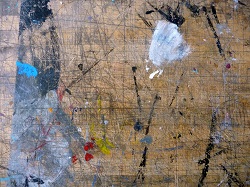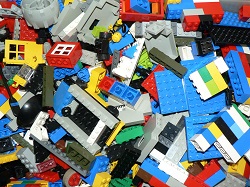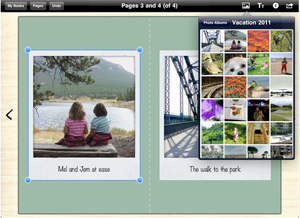While the beautiful San Diegan weather likely helps, it seems that the key to Kriscia Cabral’s cheerful outlook is fun, innovative teaching practices that really help her students. And what schoolchild doesn’t want to write on their desk?

Writeable furniture: the concept sounds silly. I agree. Of course, for those who are reading this, we are adults. We have forgotten about the little things in life. We have forgotten about how excited we used to get when we would bang the chalkboard erasers together. I remember being so amazed at my teacher when she used a crazy gadget that created five straight lines in a row with her chalk pieces, all at one time!
About four years ago I started the journey down the path of combination classes. Teaching two grades at one time has inspired me forever, but there was one big lesson I got out of it all.
On 30th January, Theresa Eicholz publishes another thoughtful article from San Antonio, Texas; this time on how to think outside the box, leaving the instructions behind....

“The real value of the Lego set doesn’t come until the kid takes it apart and realizes they’ve lost the instructions.” - Randy Rogers
In his TCEA 2014 presentation, “Failure to Innovate,” Randy Rodgers stated the above quote, and I realized that it really says a lot about the problems in education today. Our students are far too reliant on following directions, and so many are afraid to deviate in order to do some creative thinking. I remember my daughter being the same with an old Lite-Brite we had inherited from a friend. She loved it as long as there were papers she could stick on it to make the designs. But as soon as we ran out of the papers, she didn’t know what to do. When I suggested she make up her own designs, she looked at me like I was crazy. As parents and teachers, we need to find ways to encourage creation, rather than only rewarding products that basically just prove our students know how to follow directions.

I strongly believe the arts have the power to transform lives and urge schools to spend a portion of the Pupil Premium on arts education. The earlier a child's engagement with the arts, the more likely they are to develop vital skills such as communication, analysis, confidence and teamwork. These skills can have hugely positive effects on children’s academic achievements, helping them better engage with the mainstream curriculum and in turn improving their results at school.
Whilst there is mounting pressure on today’s teachers to improve their pupils’ academic achievements in traditional subjects such as maths, English or science, the benefits of arts education on these very subjects is becoming ever more apparent. Throughout The Prince's Foundation for Children & the Arts' Start programme, for example, which reaches out to disadvantaged pupils and creates sustainable partnerships between their schools and local cultural venues, we asked teachers about the positive correlation they had seen between arts education and academic achievement.

As the Government abandons its plans to replace GCSE’s with English Baccalaureate Certificates, it has unveiled proposals to strengthen the national curriculum in England. The consultation exercise includes plans for a new computing curriculum designed to equip students with the basic skills and drive higher expectations and standards. Under the new approach, schools will be encouraged to shape the curriculum to meet the aspirations and priorities of pupils. But it overlooks one thing: how do you cater for and engender creativity and flair?
It was Albert Einstein who famously said that “Imagination is more important than knowledge.” For many students, seeing the germ of an idea flourish and grow empowers them with a renewed confidence and teaches them so much more about themselves. As such, it is incumbent upon teachers to try and develop lesson plans that capture the passion and drive that resides in everyone and help draw it out. Nowhere is this more apparent than in app development work. There is something unique about app development that sparks the imagination and fires a student’s creativity and ingenuity. For teachers and education professionals alike, tailored lessons based on app development may provide the seed that engenders a spirit of discovery and engagement that ultimately can be built upon across the entire computing curriculum.
There is a cool little video that is currently going viral at the moment called 'Caine's Arcade'.
Many of the messages about learning are far too explicit for me to explain here… pretty much everybody will see that it is a parable on the theme of creativity. However, there are also other, more implicit, messages for those of us “in the business of learning”.

This post examines a selection of apps, which can be used creatively in primary schools. These apps can be applied to any subject in the school curriculum, it just requires a bit of imagination and creativity. The apps are categoriesed as follows: drawing, editing photos, creating movies, photo stories, animation, graphic novels and ebooks, composing music, and other useful creative apps.
Many of the apps listed have the option to publish work to larger audiences online, thereby increasing the incentive for the children to produce quality pieces of work. Others can be used with other apps to improve children's work. Here's the list:
Photo credit: http://appsforipads.net

A community-driven platform for showcasing the latest innovations and voices in schools
Pioneer House
North Road
Ellesmere Port
CH65 1AD
United Kingdom